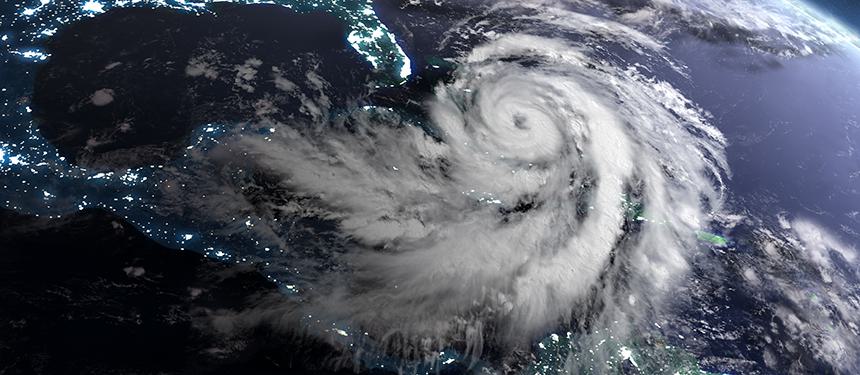2022 Atlantic hurricane season outlook

Each year, between the months of June and November, the operational and security risks across the Caribbean and the wider Atlantic basin are elevated by increased hurricane activity.
A look back on the 2021 Atlantic hurricane season
The Atlantic hurricane season of 2021 was above average for the sixth consecutive year. The season, which started early on the 22nd May, was also the third most active and costly on record with 21 named tropical storms. These storms included seven hurricanes, four of which gained major status of a Category Three or above, reaching wind speeds of 111mph and greater. The strongest hurricane of the season was Hurricane Ida, which on the 26th August formed in the Caribbean and intensified in the Gulf of Mexico where it reached Category 4 status with winds of 150 mph. On the 29th August, it reached Louisiana and was the most destructive hurricane to hit USA since Hurricane Katrina in 2015. Widespread flooding, strong winds and rain resulted in 115 fatalities and $65bn worth of damage across the Caribbean Islands and United States. For the first time, flash flood warnings were issued in New York, where such warnings are only issued in rare cases where there is an extreme threat to human life.
2022 Atlantic hurricane season outlook
The 2022 Atlantic hurricane season is expected to rise above the 1991-2020 average, according to NOAA, with approximately 14 to 21 tropical storms forecasted, six to ten hurricanes and three to six of these to reach major hurricane status. While scientists expect climate change to make huge storms worse, the latest report by the International Panel on Climate Change (IPCC) suggested with “medium confidence” that the global frequency of tropical cyclone formation will decrease or remain unchanged with increasing global warming. They concluded with “high confidence” that the proportion of intense tropical cyclones will increase on the global scale with increasing global warming, meaning that the tropical cyclones that form are likely to become more intense and therefore bring high impacts if they reach land. The combination of climatic indicators, being sea surface temperatures and El Niño-Southern Oscillation (ENSO) weather pattern, are compared with previous trends to create the assessment. Warmer sea surface temperatures mean that tropical subsystems are more likely. La Niña weather patterns, periodic cooling of the ocean’s surface temperatures across the east central equatorial pacific, will cause stronger activity in the Atlantic basin. El Niño weather patterns will decrease activity in the Atlantic basin. It is difficult to assess where hurricanes are likely to make landfall but estimates such as number of storms expected in an area can be made - it is likely to be an above-normal season in the Atlantic.

Risk mitigation measures
Prior to hurricane season
- Review evacuation plans: Ensure actionable evacuation plans are in place, including the temporarily scaling down of on-site work and moving both staff and assets.
- Identify evacuation triggers: Establish your company’s risk tolerance and confirm evacuation plans accordingly.
- Establish business continuity plans: This can include storage of assets, working from home procedures and protecting work sites.
Preparation for hurricane season
- Monitor local weather warnings: Both local weather forecasts and international organisation such as the National Hurricane Centre (NHC) will give advance warning in the event of a storm forming.
- Maintain a ‘grab bag’: Staff should pack a grab bag of essential supplies which allows them to be self-sufficient for 72 hours.
- Confirm emergency response protocols: Ensure staff are aware of the internal communication channels to use in the event of a major hurricane.
In case of an impending storm
- Identify a viable shelter: The safest location is in interior rooms on the second floor of a robust building away from windows.
- Establish whether evacuation measures need to be actioned: Quickly decide whether those in the passage of the storm should evacuate or stand fast.
- Follow all directives issued by authorities: This includes road closures, mandatory evacuations and any other directives.
- Anticipate operational disruption: Disruption to power and utilities is possible; alternative power supplies, adequate supplies of water, food and fuel, and back-up communication methods should be in place.




